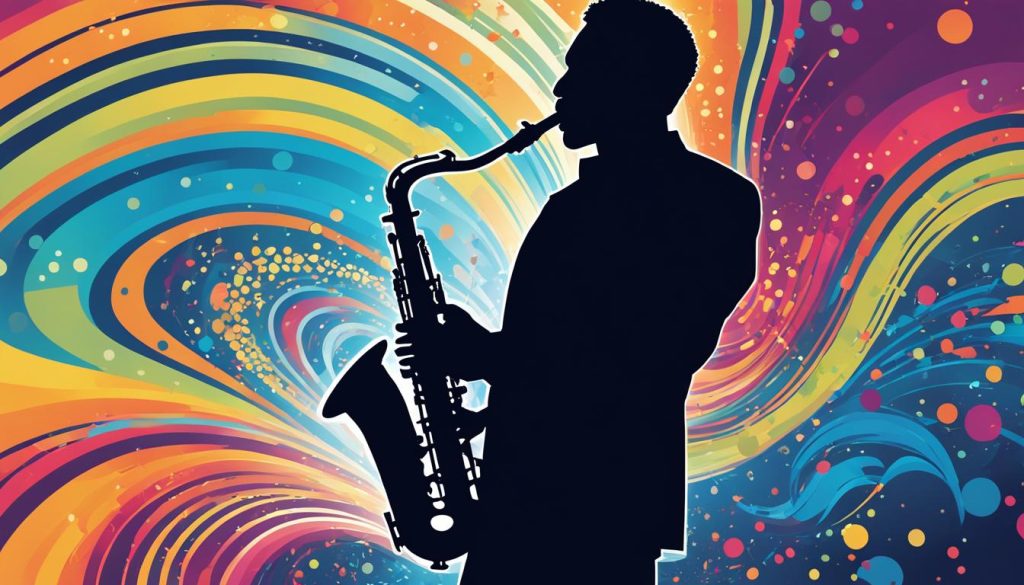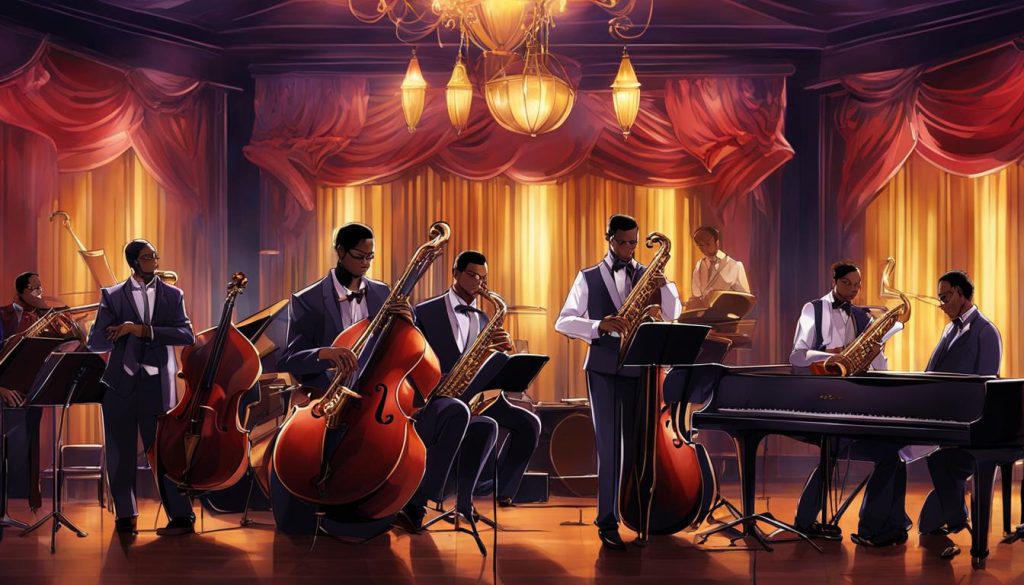Smooth Jazz: The Soulful Sound for Relaxation
Smooth jazz music is an increasingly popular genre known for its soulful sound and its ability to create a relaxing atmosphere for listeners. With its origins in the fusion of jazz, R&B, and funk in the 1960s and 70s, smooth jazz has evolved over time to incorporate elements of pop, rock, and electronic music, while retaining its signature smoothness and melodic improvisation.
Smooth jazz is characterized by a laid-back, soothing vibe that makes it the perfect music for unwinding after a long day or simply taking some time to relax and reflect. Its use of acoustic and electronic instruments creates a unique sound that is both calming and uplifting, and its popularity has made it a favorite of music lovers of all ages and backgrounds.
Key Takeaways:
- Smooth jazz music is a popular and relaxing genre known for its soulful sound.
- Smooth jazz has evolved over time to incorporate elements of pop, rock, and electronic music.
- The genre is characterized by a laid-back, soothing vibe that makes it the perfect music for unwinding after a long day.
- Smooth jazz is enjoyed by music lovers of all ages and backgrounds.
- The use of acoustic and electronic instruments creates a unique sound that is both calming and uplifting.
The Evolution of Smooth Jazz Music
Smooth Jazz has its origins in the fusion of jazz, R&B, and funk in the 1960s and 70s. This fusion was known as Jazz Fusion, which marked the beginning of Smooth Jazz music. Jazz Fusion introduced new rhythmic and harmonic complexities, with a greater emphasis on electrified instruments and improvisation.
The origins of Smooth Jazz can be traced to artists such as Grover Washington Jr., who released his album Mister Magic in 1975, which became the first record to be classified as Smooth Jazz. Later in the 80s and 90s, artists such as Kenny G and Najee further propelled the genre’s popularity with their melodic saxophone-driven sound.

As the genre grew in popularity, Smooth Jazz started incorporating elements of pop, rock, and electronic music into its sound. Artists such as George Benson introduced a more accessible, radio-friendly sound in the 80s, while the incorporation of electronic instruments allowed artists to create a smoother, more polished sound in the 90s.
Today, Smooth Jazz remains a genre that welcomes experimentation and hybridization. Contemporary musicians such as Esperanza Spalding, Snarky Puppy, and Robert Glasper are constantly pushing the boundaries of Smooth Jazz to create exciting new sounds and styles.
The Characteristics and Elements of Smooth Jazz
Smooth jazz is defined by its unique musical characteristics and elements that create a relaxed and soulful sound. One of the key aspects of smooth jazz is its use of melodic improvisation, which allows musicians to express their individuality while still maintaining a cohesive overall sound.
Relaxed grooves are another important component of smooth jazz, often achieved through the use of a slower tempo and a steady beat. This provides a sense of calmness in the music, allowing listeners to unwind and escape their daily stresses.
Smooth jazz instrumentation is also notable, as it blends acoustic and electronic instruments to create a rich and harmonious sound. Commonly used instruments include saxophones, keyboards, guitars, and drums, among others.
Composition and arrangement play a vital role in shaping the emotional and melodic qualities of smooth jazz music. Arrangements often feature lush harmonies and counter melodies, and the use of electronic effects such as reverb and delay creates a dreamy quality that further enhances the soothing and relaxing nature of the music.

“Smooth jazz is about expressing emotion and creating a feeling of relaxation and peace – it’s meant to be listened to and enjoyed, preferably with a cold drink in hand.”
Conclusion
In conclusion, smooth jazz music offers a unique and soulful sound that has captivated listeners around the world. Its ability to create a relaxing atmosphere makes it an ideal choice for unwinding after a long day or simply enjoying a moment of calm. With its origins in the fusion of jazz, R&B, and funk and its evolution to incorporate elements of pop, rock, and electronic music, smooth jazz is a genre that continues to evolve and attract new fans.
The characteristics and elements of smooth jazz, including melodic improvisation, relaxed grooves, and a blend of acoustic and electronic instruments, contribute to its soothing and calming effects. The composition and arrangement of smooth jazz music also play a significant role in shaping its emotional and melodic qualities.
Whether you’re a long-time fan or hearing smooth jazz for the first time, exploring the genre can be a rewarding and relaxing experience. So why not take some time to enjoy the soulful sound of smooth jazz music today?
FAQ
What is smooth jazz music?
Smooth jazz music is a genre known for its soulful sound and its ability to create a relaxing atmosphere for listeners. It combines elements of jazz, R&B, funk, pop, rock, and electronic music to produce a smooth and melodic sound.
How did smooth jazz music evolve?
Smooth jazz music evolved from the fusion of jazz, R&B, and funk in the 1960s and 70s. It was influenced by artists such as Grover Washington Jr., George Benson, and Bob James, who blended these genres to create a more accessible and commercially successful style of jazz.
What are the characteristics of smooth jazz?
Smooth jazz is characterized by melodic improvisation, relaxed grooves, and a blend of acoustic and electronic instruments. It often features catchy melodies, lush harmonies, and a focus on creating a laid-back and soothing vibe.
What instruments are commonly used in smooth jazz?
Smooth jazz incorporates a variety of instruments, including saxophone, guitar, keyboard, bass guitar, drums, and synthesizers. This combination of acoustic and electronic instruments adds dimension and depth to the smooth jazz sound.
Why is smooth jazz popular?
Smooth jazz is popular because of its ability to create a calming and relaxing atmosphere. It appeals to a wide audience, offering a soothing and soulful escape from the stresses of everyday life. Its melodic and accessible nature makes it enjoyable for both casual listeners and jazz enthusiasts.
